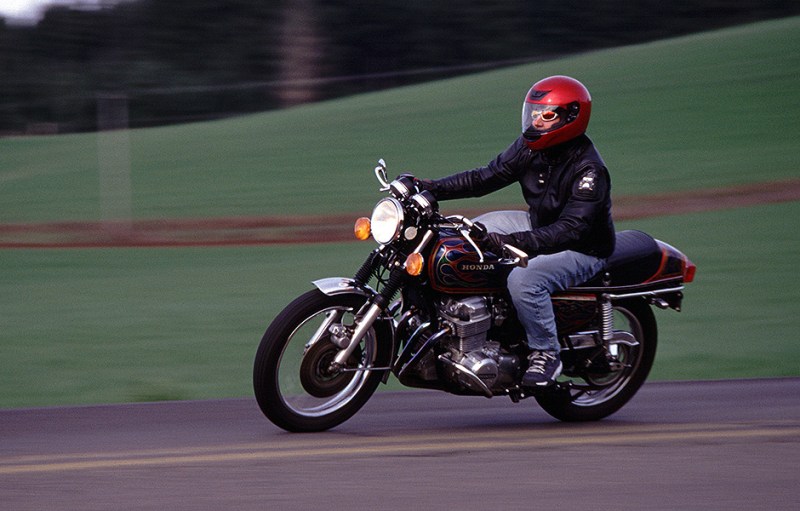
East Coast and Midwest riders have had a tougher time of it. I hope you are all digging out, drying out and ready for riding season to begin again. I know it’s been a slog this winter.
If you’re like most fair-weather riders and parked your bike when it finally got too cold, too wet and dark too early (or all of the above), you’re probably pretty amped to get back in gear and get back out on the road. I’m with ya.
But some vintage words to the wise: check yourself before you wreck yourself. That’s right; just putting the key in your bike and hitting the streets without prior preparation can become an unlikely precursor to a ruined riding season – or worse.
First, check out your bike. Check the tires, and air ’em up. Motorcycle tires slowly lose air over time, in fact pretty much all tires do. Rolling into a turn with a front tire that’s now 10 pounds under pressure can result in a washout and crash, or some suddenly very scary handling, to say the least. If you don’t have a pump or compressor at home ($60 at Harbor Freight, yo), find a buddy that does or stick some quarters in the machine at the gas station. Just use an accurate pressure gauge to make sure your tires are in the sweet spot. For street bikes, that means at least 30psi and probably 35 at the most. Check your tire’s website for more precise recommendations.
Oil check: if you’re like me (that is, you’re somewhat fanatical about upkeep), you changed your oil and filter when you parked your bike for the winter. Then you got sandwich baggies and rubber banded them over the exhaust pipes to keep out critters and moisture. Then you pulled the battery out and put it on a floating tender before swaddling your precious with a fitted cover and smudging the garage with burnt sage while chanting to keep away evil spirits.
Oh, you didn’t do all that? Well, while you weren’t riding, the oil in your bike separated into layers of sludge and while the temperature went up and down, condensation (water droplets) formed inside the engine and has now mixed with the oil, setting you up for a possible bearing seizure/blown engine. I’d change it before riding again.
Check your fork seals for weeping or outright leaks, have a shop put in new seals if you find a problem. If you let it go, the fork oil can leak down onto the front brakes, leaving you with essentially no brakes. That’s bad news, so don’t wait to get it done.
Pump the brakes and roll the bike back and forth to see if they are sticking at all. If so, you’ll need to get the brakes purged, which is something you can do at home on most bikes. There are kits for doing it correctly. If the brakes still stick, you’ll need to locate the guilty caliper and have it rebuilt. Rule of thumb: flush and replace brake fluid every two years at least, every year is best. It also helps prevent caliper problems.
Next, gas up, and at a gas station, not from the jerry can in the garage (unless you just filled it up). If you filled up and put fuel stabilizer in your tank when you parked for the winter, you’re in good shape, go burn through that tank on a long ride if possible. Put fresh premium gas in before you get home. If you just parked your bike last winter and have no idea how much is in the tank, condensation has likely also formed inside and mixed with the gas. Water in your fuel can play havoc with your fuel system, be it carbs or digital fuel injection. If you let the gas tank sit half full and untreated, it’s watery crap gas by now. Siphon it out (DO NOT USE YOUR MOUTH) before filling up your bike with fresh new gas.
Lastly: take it easy. I don’t care how long you’ve been riding, when you take a long break (more than a few weeks), skills fade. It’ll take a bit to re-acclimate your body to the riding dynamics and your mind to the task of keeping you alive while under way. Be sure to gear up. Start with a gentle cruise to get synced up again, maybe on a Sunday morning when traffic is light. Get out of town, take a few easy curves, run through the power to remind yourself that you’re not in a car anymore. Pay attention to how the bike feels and performs. Any funny noises or smells? Brakes OK? Instruments correct? Good deal, have a great year riding.
And this coming winter, don’t forget the sage.
Photo by Bill Roberson. Rider: Jerry Blazek


